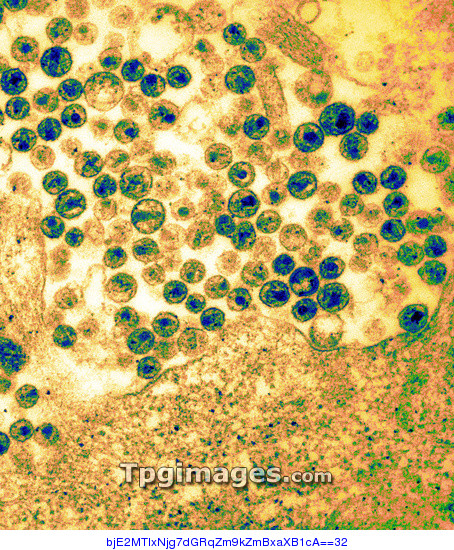
AIDS virus particles budding from the membrane of their host cell, coloured transmission electron micrograph (TEM). AIDS is a disease caused by the human immunodeficiency virus (HIV, green). The virus attacks CD4+ T-lymphocytes (brown, lower frame), white blood cells that are a crucial part of the body's immune system. It enters the cell, hijacks the cell's machinery to make more copies of the virus, and the new virus particles then burst from the membrane of the cell, killing it. This severely weakens the immune system, causing AIDS. The disease makes the patient susceptible to diseases that would otherwise be harmless. Magnification: x50,000 when printed 10cm high.
| px | px | dpi | = | cm | x | cm | = | MB |
Details
Creative#:
TOP01415045
Source:
達志影像
Authorization Type:
RM
Release Information:
須由TPG 完整授權
Model Release:
N/A
Property Release:
N/A
Right to Privacy:
No
Same folder images:

 Loading
Loading